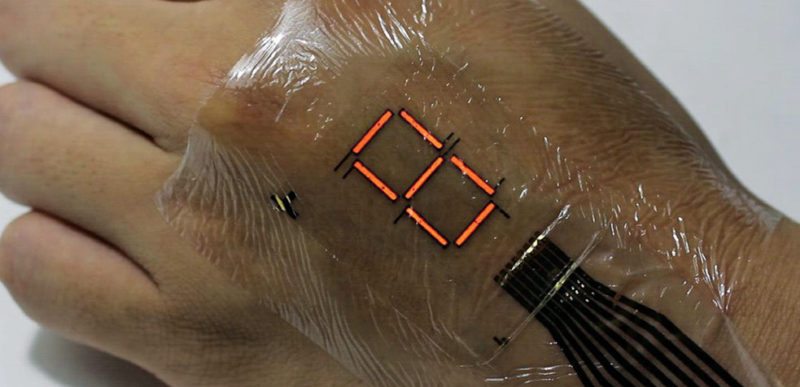DNA storage could make data centres obsolete
Imagine being able to store a data centre’s worth of information on something the size of a single USB stick. A new technique developed by a team of computer scientists could one day make this possible using something borrowed from nature: DNA.
Researchers from the University of Washington and Microsoft Research have developed one of the first complete systems to encode, store and retrieve digital data using DNA molecules, capable of storing information millions of times more compactly than current data storage technologies.
A paper presented recently at the Architectural Support for Programming Languages and Operating Systems (ASPLOS) conference in Atlanta describes how four images were successfully encoded into DNA snippets. More significantly, the researchers were able to reverse the process and perfectly retrieve the images without losing a single byte of information.
The images, which are encoded as a string of 0’s and 1’s, are converted into a string of A’s, C’s, T’s and G’s—the bases that pair to form DNA. A DNA molecule with that sequence is then chemically synthesised and dried out for storing with billions of other molecules.
“This works for any digital data, not just images,” says Luis Ceze, an associate professor of electrical engineering at the University of Washington and one of the authors of the study.
“We used images because images and video tend to take lots of storage space.”
All the movies, images, emails and other digital data from more than 600 basic smartphones (10,000 gigabytes) can be stored in the faint pink smear of DNA at the end of a test tube. Digital data—including videos, photos and text—collected by devices is expected to hit 44 trillion gigabytes by 2020. At its current rate, the world is producing more data than the capacity to store it. Ceze and his colleagues believe DNA could be the solution to this problem.
Ceze adds, “DNA also never becomes obsolete, unlike that old dusty floppy disk at the bottom of your drawer.”

Electronic ‘tattoo’ transforms skin into a screen
Researchers have taken the concept of wearable technology to a whole new level by developing an electronic patch that transforms skin into an LED screen. The flexible display, created by scientists at the University of Tokyo, is as thin as cling film and is described as electronic skin, or e-skin.
The research, published in the journal Science Advances, describes how the technology could be used to display the wearer’s blood oxygen level or heart rate, meaning potential applications could be both medical and consumer. To achieve the flexibility required for such a device, the team of scientists used alternating layers of inorganic (silicon oxynitrate) and organic (parylene) material. This prevented oxygen and water vapour in the air from damaging the electronics.
Electronic displays have been stuck to skin before; however, the lifespan is usually only a few hours. In tests, the e-skin was able to last for several days.

Texas Instruments India hosts ‘DIY with TI’ program
Texas Instruments (TI) India has hosted the 4th edition of ‘DIY with TI’ event designed to recognise and encourage TI hobbyists who innovate in their spare time using TI devices, and showcase their creativity with innovations that help solve real-life problems. Over 50 engineers got together in teams at TI in India and showcased their passion for creating simple and innovative solutions with over 20 cool and interesting demos.
This year, Prathap Ghorpade, Manoja Vinnakota and John Roshan Samuel won the Chief Geek award for their DIY project ‘Air-O-care’ that essentially monitors air quality and measures pollution. Pheroze Verma, Shinjan Pal, Prathap R. and Prathap Srinivasan, Kamath Veena, Sudhakar Singh were recognised as runners-up for their projects on ‘Multi Apartment Door-Entry System with Wireless Video and Two-Way Audio’ and ‘Smart Digital Door Lock and Access Control for Secure Home and Hotels,’ respectively.
There were other notable projects in the realm of robotics and smart farming applications.
Blackberry Radar to drive higher profits for trucking industry
At the 2016 Mid-America Trucking Show, BlackBerry unveiled BlackBerry Radar, a new end-to-end asset tracking system for trucking companies and private fleet operators. With BlackBerry Radar customers can optimise utilisation of their trailers and shipping containers, improve on-time delivery, reduce theft and generate more revenue from each trailer, without having to invest in costly IT infrastructure. BlackBerry Radar provides everything needed to track highly mobile assets, including a self-powered tracking device, an Internet of Things (IoT) platform with cloud based applications, world-class security and visual reports that make it easy to pinpoint the location and status of each asset.
The BlackBerry Radar tracking device takes only minutes to install and generates rich, frequently updated information that enables operations managers, load planners and dispatchers to make the most profitable decisions for their organisations. For example, the device can send real-time alerts whenever a trailer has crossed a user-defined geofence, or when a trailer door has opened or closed. It also monitors GPS location, temperature, humidity and the presence of cargo. To access this data, customers simply log into BlackBerry Radar’s secure online portal—from there, they can interact with elegant visualisations and one-click reports that show where their assets are, and what is happening to them.
BlackBerry Radar also provides an extensible architecture and rich application programming interfaces (APIs) to help developers create innovative applications.
Delphi unveils 48V vehicle solution to meet emission norms
Automotive parts manufacturing company Delphi has unveiled its 48-volt vehicle solution that could prove pivotal for automakers in meeting future emission regulations without sacrificing performance for customers. The company confirmed it is working with two global automakers and could see production within 18 months.
Showcased in a Honda Civic 1.6-liter diesel vehicle at the company’s annual investor update, Delphi’s 48-volt, mild hybrid technology enables ‘intelligent’ electrification. The customised vehicle architecture maximises the use of the 48-volt electrification to minimise the demand on the engine, improving performance while lowering CO2 emissions by more than ten per cent.

Software simplifies detection of activity on mobile and wearable
STMicroelectronics has made additions to its Open. MEMS portfolio of free and easy-to-use software libraries for the development of motion-sensing applications. This provides an ideal route to implementing contextual awareness in mobile, wearable and Internet of Things applications.
The new software allows the detection of human activities from data acquired by inertial sensors embedded in the end-user equipment. Optimised to minimise power consumption, these are particularly suited for fitness and healthcare applications in portable or wearable platforms that monitor human physical activities in real time over long periods.
The osxMotionAR Activity Recognition package identifies the user activity from a wide range of movements and transportation scenarios such as stationary, walking, fast walking, jogging, cycling, and driving. The osxMotionCP Carry Position package detects how the device containing the motion sensors is being carried, that is, whether it is placed on a desk, held in hand or in a swinging arm, near the user’s head, or put in a shirt or trouser pocket.
The osxMotionGR Gesture Recognition package recognises the actions carried out on a mobile or handheld device, including pick-up, glance, or wake-up, which allows designers to develop controls for different functions on the device.
The new Open. MEMS packages are available free of charge to customers through a simple click-through licence agreement.










